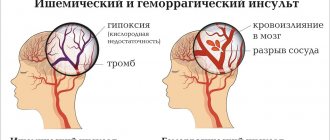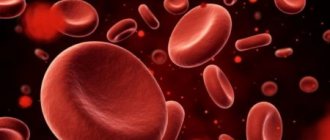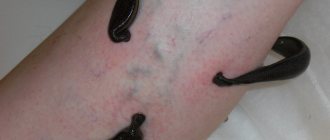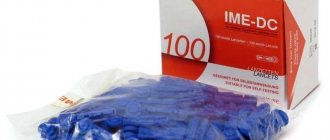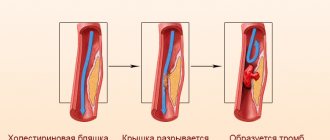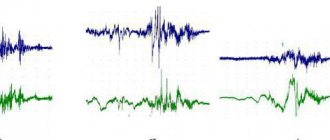Ultraviolet irradiation of blood is considered one of the effective methods of cleansing the skin, stimulating the rapid elimination of inflammatory processes in the body, and restoring the body's defenses. Being one of the most popular methods of physiotherapy, ultraviolet irradiation of blood has a wide range of indications for use; the positive results from its use become noticeable within the first few procedures.
Concept of method
The use of the UFOK (ultraviolet blood irradiation) method makes it possible to stabilize the patient’s condition in case of serious organic pathologies and speed up the recovery process. The use of this method of physiotherapy is indicated for a variety of diseases, both in adults and children. The long-term preservation of a positive result is due to the effect on the body at the cellular level, which allows the use of UVOC even in advanced pathological processes.
Ultraviolet irradiation of blood is carried out using a special device for physiotherapeutic purposes; the ease of use and accessibility of this method makes it especially popular in comparison with many other physiotherapeutic methods of treatment and prevention. The mechanism of the effect of ultraviolet irradiation on systems and individual organs has not been fully studied, however, according to practical research, it is with its help that the most pronounced positive results from the treatment can be obtained, even in such serious diseases as thrombophlebitis, disorders in the functioning of joints and ligaments, with anemia, negative changes in the body's metabolism.
This video will tell you what UFOK is:
UVB blood what is it?
Ultraviolet purification is based on the ability of the light flux to adjust the composition of the blood at the cellular level.
During the procedure, the following changes occur in the blood:
- The amount of hemoglobin increases;
- Pathogenic bacteria and viruses die;
- The antioxidant properties of blood improve;
- Metabolic processes are activated;
- The acid-base balance is restored.
Thus, there is a comprehensive normalization of the content of formed elements and chemical compounds in the blood. These changes help strengthen the immune system, improve tissue nutrition, reduce blood viscosity, and therefore restore microcirculation and resolve blood clots. UV irradiation is often used in medicine to enhance the effect of classical drugs.
Pros and cons of ultraviolet irradiation of blood
The advantages of the method of therapy under consideration include the speed of manifestation of a positive treatment result, the duration of its preservation and the possibility of using UVOC in a complex effect, which increases the effectiveness of the therapeutic effect.
Relieving the manifestations of toxicosis in pregnant women, eliminating the symptoms of peptic ulcers and lesions of the duodenum, stabilizing nervous processes, eliminating signs of inflammation, this method is also well suited for the treatment and prevention of seasonal diseases in children (ARVI, acute respiratory infections, colds), pneumonia, bronchial asthma. Using the method of ultraviolet irradiation of blood, you can achieve truly unique results in the treatment of even particularly serious lesions, when many other methods of physiotherapy do not give a pronounced positive result.
An additional advantage of the method is the relative accessibility of its implementation: the price for the procedure is not too high. A course of UVOC procedures consists of 5-12 repetitions, after which it is possible to ensure a significant improvement in the general health of the patient, eliminate the main symptoms and carry out preventive measures that will make it possible to prevent many diseases.
The disadvantages include a number of restrictions that exist for the implementation of UVOC. These include conditions such as oncological processes of any localization, pulmonary tuberculosis in the active stage, prolonged or chronic internal and external bleeding, as well as syphilis and AIDS.
Contraindications for UVOC
This method of therapeutic treatment should not be used in cases where the following contraindications exist:
- Hemophilia;
- Bleeding of various nature;
- Porphyria or protoporphyria disease;
- Acute period of tuberculosis;
- Photodermatosis;
- Severe cerebrovascular accident;
- Various forms of cancer.
Exposure to ultraviolet radiation on autologous blood can cause photoallergy. The use of UVOC in the presence of contraindications can cause dizziness, chills, various neurovegetative reactions, and also, in rare cases, bronchospasm.
Thus, contraindications for UVOC are hypotension, anemia, hypocoagulation, photodermatitis, malignant diseases, stage III circulatory failure.
Comparison of UVBI and ILBI
A procedure such as ILBI, or intravenous laser irradiation of blood, is a physiotherapy procedure that works well for a variety of organic pathologies and as a preventative measure. Its peculiarity should be considered the effect on the blood of a light wave of a certain length, which eliminates inflammatory processes in the body, stimulates the immune system, and ensures the rapid elimination of pathological cells from the blood.
Laser exposure has found its use both for medicinal purposes and as a disease prevention, stimulating the immune system and ensuring faster recovery after viral infections. Having a pronounced therapeutic effect, ILBI, when compared with ultraviolet irradiation of the blood, can stand out due to the elimination of pathologies with a short course, in the absence of concurrent diseases. And although the therapeutic effect of intravenous laser irradiation of blood is somewhat lower in comparison with UVOC, this method is often prescribed by a physiotherapist as an additional therapy to eliminate the symptoms of many organic pathologies and systemic diseases.
Intravenous laser blood irradiation (ILBI)
One of the ways to influence the body with laser radiation is intravenous laser blood irradiation (ILBI), which is currently successfully used in cardiology, pulmonology, endocrinology, gastroenterology, gynecology, urology, anesthesiology, dermatology and other areas of medicine. Deep scientific study of the issue and predictability of results contribute to the use of blood ILBI both independently and in combination with other treatment methods.
The mechanisms of action of ILBI are due to the influence not on the cells of local areas, but through changes in the properties of blood components with subsequent generalization of the effect on the body as a whole. The universality of the action of ILBI is due to its influence on the lower (cellular) level of regulation and maintenance of homeostasis, and in the event of violations of these mechanisms, which are the true cause of many diseases, it corrects the adaptation strategy at all levels.
The effect of ILBI on hemoglobin ensures its transfer to a more favorable conformational state for oxygen transport, and also increases the formation of ATP and energy production in cells. An increase in the permeability and deformability of the membrane, a decrease in aggregation capacity, a change in sorption properties, an increase in ATP levels, and an increase in oxygen transport function were found in blood erythrocytes. In leukocytes, increased activity of membrane receptors, activation of DNA synthesis, increased phagocytic activity, secretion of bactericidal cationic proteins, interleukins, growth-stimulating and rheological factors, heparin, serotonin, histamine and other biologically active substances, activation of DNA repair enzyme systems, changes in the activity of immunocompetent cells were detected. Changes in the membrane structure, adhesive and aggregation properties, and changes in the level of biologically active substances were noted in platelets.
Improving microcirculation and oxygen utilization in tissues when using ILBI is also closely related to a positive effect on metabolism: the oxidation of energy materials - glucose, pyruvate, lactate - increases. In the blood plasma, the activity of complement, lysozyme, natural and immune antibodies, bactericidal and antioxidant activity increases, proteolytic activity is normalized, the content of lipid peroxidation products (LPO) decreases, procoagulant, anticoagulant and fibrinolytic properties change, and the sorption properties of albumins increase.
In addition, intravenous laser blood irradiation (ILBI) significantly affects the mechanisms of regulation and maintenance of homeostasis at the level of the central and autonomic nervous systems, restoring a pathologically displaced state.
The listed changes are the main mechanisms of such therapeutic factors of ILBI as:
- correction of cellular and humoral immunity, increased phagocytic activity of macrophages,
- strengthening the bactericidal activity of blood serum and complement system,
- a decrease in the level of C-reactive protein, the level of medium molecules and plasma toxicity, an increase in the content of immunoglobulins IgA, IgM, IgG in the blood serum, as well as a change in the level of circulating immune complexes,
- an increase in the number of lymphocytes and a change in their functional activity,
- increasing the ability of T-lymphocytes to form rosettes and DNA-synthetic activity of lymphocytes,
- stabilization of the ratio of the T-helper/T-suppressor subpopulation,
- increased nonspecific resistance of the body,
- improvement of rheological properties of blood and microcirculation,
- regulation of the hemostatic potential of the blood,
- vasodilating effect, anti-inflammatory effect and analgesic effect,
- normalization of the ionic composition of the blood,
- increasing the oxygen transport function of the blood, as well as reducing the partial tension of carbon dioxide,
- an increase in the arteriovenous difference in oxygen, which is a sign of normalization of tissue metabolism,
- normalization of proteolytic and increase in antioxidant activity of blood,
- normalization of lipid peroxidation processes in cell membranes,
- stimulation of erythropoiesis,
- stimulation of intracellular DNA repair systems during radiation injuries,
- normalization of metabolic processes (protein, lipid, carbohydrate, intracellular energy balance),
- normalization and stimulation of regenerative processes.
Intravenous laser irradiation of blood can be performed not only on an inpatient basis, but also on an outpatient basis. The advantage of outpatient ILBI is that it reduces the possibility of developing a nosocomial infection; it creates a good psycho-emotional background, allowing the patient to remain functional for a long time, while undergoing procedures and receiving full treatment.
Indications for testing
The use of ultrasound blood irradiation is due to its high efficiency, and this method of active physiotherapy is prescribed in the following cases:
- with disturbances in the functioning of the respiratory system, with frequent colds, especially in childhood and during the off-season;
- with the development of nervous pathologies, poor night sleep, long-term depression and chronic fatigue;
- for diseases of the gastrointestinal tract - gastric ulcer, erosion and dyspepsia of the duodenum, poor digestion of food and frequent belching;
- in case of infection and poisoning of the body;
- to relieve signs of intoxication and manifestations of toxicosis in pregnant women;
- for circulatory disorders - this technique is most effective for thrombophlebitis and varicose veins; the use of UVOC also shows good results in cases of deterioration of blood circulation in the tissues of the extremities, and with obliterating atherosclerosis of blood vessels;
- for diseases of the ligamentous apparatus;
- with a decrease in libido in both men and women;
- for various sexual and urogenital diseases.
Also, the method under consideration can be used in the treatment of long-term and chronic lesions that cause deterioration of the skin. Dermatitis, eczema, psoriasis can be easily corrected using ultraviolet irradiation of the blood due to its cleansing and disinfecting function. The method is also used if available:
- Psoriatic impetigo herpetiformis;
- ostiofolliculitis;
- boils;
- uterine fibroids;
- Behçet's disease.
In this video, the anesthesiologist will talk about the functions of the UFOK:
Indications
UV irradiation of the pharynx and nose is necessary to eliminate the manifestations of unpleasant symptoms in various diseases. It is used in the following cases:
- Inflammation of the maxillary sinuses. The procedure is performed after washing the sinuses. The action of ultraviolet rays is aimed at the mucous membrane of the nasal passages.
- Salpingootitis. This disease is a consequence of acute rhinitis. When treating a disease, tube-quartz affects the mucous membrane of the back wall of the pharynx, as well as the nasal passages. Separately, irradiation of the external auditory canal can be performed.
- Chronic tonsillitis. The action of the rays is directed to the palatine tonsils using a tube that has an oblique cut.
- ORZ. The treatment method is used at the very beginning of the development of the disease. The pharynx and nose are irradiated.
- Flu. During the period of exacerbation of the disease, the procedure is not performed. It is prescribed after all acute symptoms have subsided to prevent the development of complications. The places where ultraviolet rays are exposed are the throat and nose.
- Angina. The procedure is prescribed in the first days of the development of the disease. In this case, the patient should not have purulent plaque or high temperature. When the disease is in catarrhal form, further complications of angina can be prevented. The procedure is also relevant during the recovery period, after clearing pus from the tonsils. This allows for faster recovery.
- Acute rhinitis. Tube-quartz is prescribed both at the beginning of the development of the disease and during its subsidence. This allows you to exclude a secondary type of infection, as well as avoid various complications. The throat and nose are irradiated.
- Sinusitis and sinusitis. The method is relevant only for the catarrhal form of the disease. When performing it, it is important that there is no pus; it is also prescribed during the recovery period.
- Adenoids. With the help of ultraviolet irradiation, you can remove swelling and disinfect the mucous membranes. Helps avoid the development of inflammation.
- Rhinitis. The method is very effective for all forms of bacterial rhinitis. It actively eliminates inflammation, suppressing pathogenic microflora.
Ultraviolet therapy is also effective in the treatment of otitis media, pharyngitis, tonsillitis and other ENT diseases.
Preparation for the procedure
Before carrying out this procedure, you should initially make an accurate diagnosis, which will determine the need for any therapeutic intervention. Next, the general practitioner or physiotherapist will prescribe the number of ultraviolet blood irradiation procedures, their frequency, and monitor the treatment process.
Before the procedure, the patient assumes a horizontal body position and relaxes as much as possible. Using a special device with an ultraviolet method of exposure, an effect with a physiotherapeutic effect is carried out.
Determination of radiation biodose
The duration of exposure and the dose of ultraviolet radiation received is determined by a physiotherapist based on the diagnosis, as well as the degree of sensitivity of the body to the treatment. The dosage of the procedure also depends on age: in early childhood, the period of exposure is slightly lower than in adults.
- On average, it is enough for a child to receive a therapeutic effect from a procedure lasting 2-5 minutes in one session.
- For adults, the dosage may be increased. However, the total duration of such a procedure should not exceed 15 minutes per session.
Monitoring by a doctor will help to avoid possible side effects and negative consequences of the ultraviolet blood irradiation procedure.
How is the procedure performed?
The procedure requires supervision by a physiotherapist. The device used for ultraviolet irradiation is usually located in the physical therapy department of a medical facility. Before starting the procedure, the degree of radiation power is determined, as well as the duration of the procedure.
Immediately before the procedure, you should, if possible, take a relaxed horizontal position - this will increase the effectiveness of ultraviolet irradiation of the blood many times over. The process lasts from 5 to 15 minutes, after which you should rest for some time while in a horizontal position.
To carry out the procedure, blood can be taken from the patient, heparin is injected into it to prevent it from clotting, and then it is irradiated with waves. A needle can also be inserted directly into a vein to irradiate the blood.
Consequences and possible complications
Since the procedure for ultraviolet irradiation of blood is practically harmless, its use in the absence of the contraindications listed above does not have any negative consequences for the patient’s condition. The most common complication after a UVOC session is local slight redness of the skin at the site of injection of the needle or drug.
A likely complication of some overdose of ultraviolet radiation may be nausea, dizziness, vomiting, fatigue and the appearance of excessive fatigue even with minor physical activity. In some cases, with increased sensitivity of the body to this type of radiation and an individual tendency to allergic manifestations, an increase in current symptoms, headache, spots before the eyes, and fainting may be observed. In these cases, you should stop the procedure, consult a doctor, or reduce the dosage of blood irradiation.
Recovery and care after the procedure
After this procedure, a long period of rehabilitation is not required; you should only rest for some time (15 minutes) in a horizontal position immediately after its completion.
To increase the degree of positive impact, it may be recommended to avoid taking certain medications that enhance the effect of the procedure in question. These drugs should include and should not be used during a course of ultraviolet irradiation of blood:
- hormonal drugs;
- herbal remedies that are used to increase the rate at which the body produces melanin (for example, in the treatment of vitiligo);
- synthetic products that basically have antibacterial properties.
The listed drugs should be discontinued before starting the UVOC procedure in order to prevent the possibility of getting a sunburn even with a short stay in the sun, since they all contain substances that increase the sensitivity of the epidermis to the effects of ultraviolet radiation contained in the sun's rays.
Reviews
According to reviews from those who have already used the UVOC procedure both for treatment and as a preventive measure, its degree of effectiveness for various lesions is high. Completing the full course of the procedure can significantly speed up the recovery process, eliminate the symptoms of the underlying disease, and since the scope of UVOC is wide, this allows it to be used in an integrated approach in the treatment of even chronic forms of lesions.
Having a minimal number of possible side effects, ultraviolet irradiation of blood can be used in the treatment of children and pregnant women. This property of the procedure is one of the advantages of the method under consideration, and many patients noted a speedy recovery of children, elimination of symptoms of toxicosis in pregnant women, as well as stabilization of the general condition. Having an affordable price, UVOC can be prescribed to almost all categories of patients.
Indications for the ILBI/UFOK procedure in otorhinolaryngology
Due to its positive effect on the immune system, the ILBI/UFOK method has been widely used in otorhinolaryngology for all acute inflammatory processes of ENT localization, including acute respiratory viral infections, acute tonsillitis (tonsillitis), sinusitis, otitis, laryngitis.
In chronic inflammatory diseases accompanied by a decrease in the immune response, the ILBI/UFOK method has found widespread use due to its activation of immune
complexes responsible for regulating cellular and humoral immunity. Thanks to this effect, in patients with chronic pathology (tonsillitis, otitis, adenoiditis, sinusitis), after a course of ILBI, a sufficient immune response is formed, which helps transfer the process into a state of long-term remission.
Due to its beneficial effect on the rheological properties of blood and improvement of microcirculation, the ILBI/UFO method has found application in the complex treatment of non-inflammatory diseases of the ENT organs, such as Meniere's disease, sensorineural hearing loss, and tinnitus.
Thus, almost all pathology of ENT localization with complex treatment with the addition of ILBI/UFBI has a clear tendency to reduce the recovery and rehabilitation time in acute processes and transfer the disease into stable remission in chronic processes.

